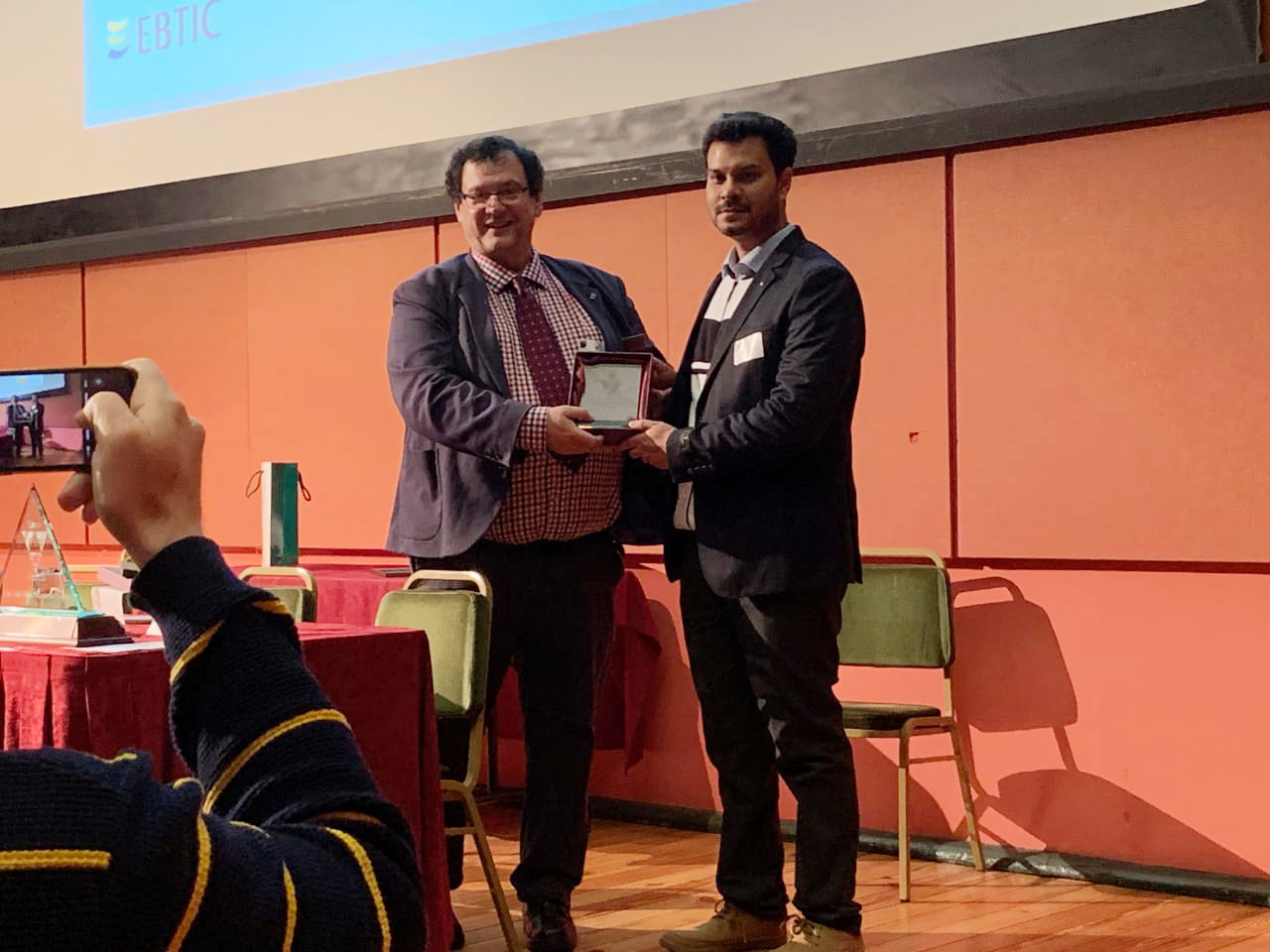
A team of researchers from KU’s Emirates ICT Innovation Center (EBTIC) has won Best Application Paper at the Chartered Institute for IT’s 39th International Conference on Artificial Intelligence in Cambridge. Himadri Sikhar Khargharia and Dr. Siddhartha Shakya, both from EBTIC, collaborated with researchers from BT on the winning paper.
The British Computer Society’s Specialist Group on Artificial Intelligence (SGAI) hosted its Annual International Conference, bringing together researchers and developers at the cutting edge of AI solutions. The leading papers presented in each stream of the conference are reprinted as a special issue of an international journal and Khargharia’s paper is set to be among them alongside its publication in Lecture notes in Computer Science.
Khargharia presented his paper in the Application Stream, titled ‘Evolving Prediction Models with Genetic Algorithm to Forecast Vehicle Volume in a Service Station.’ This paper is one of many to emerge from the EBTIC smart surveillance system designed to help streamline operations at petrol stations.
Using Internet of Things (IoT) infrastructure in the form of CCTV cameras and sensors, the system captures the data required to build a demand prediction model and analytical dashboard to provide insight into the large volume of data collected.
“In the service industry, having an efficient resource plan is of utmost importance for operational efficiency,” explained Khargharia. “An accurate forecast of demand is crucial in obtaining a resource plan that can be efficient. At the conference in Cambridge, I presented a real world application of an AI forecasting model for vehicle volume forecasting in service stations. This improved a previously proposed approach by intelligently tuning the hyper parameters of the prediction model, taking into account the variability of the vehicle volume data in a service station.”
“We built a genetic algorithm-based model to find the topology of the neural network and to also tune additional parameters related to data filtration, correction, and feature selection. Our results were compared with those from ad hoc parameter settings of the model from previous work and show that the combined genetic algorithm and neural network-based approach further improves forecasting accuracy. Now, service stations can better manage their resource requirements,” added Dr. Shakya.
A genetic algorithm is a search heuristic inspired by Charles Darwin’s theory of natural evolution. The algorithm reflects the process of natural selection where the fittest individuals are selected for reproduction. The same principle can be applied to a search problem where a model selects the best solution out of a set. The algorithm assesses the ‘fitness’ of the solution to the problem and produces a score. In the selection phase, the solution with the highest fitness score is selected and then crossed at random with another solution. This new generation of solutions is then used in the next iteration of the algorithm to result in a different, ideally more effective set of solutions.
This improvement to the forecasting model is part of phase three of the system’s development in which capabilities are developed and the program can make business intelligence decisions.
Jade Sterling
News and Features Writer
20 January 2020






